Please add updates or make corrections to the NumisWiki text version as appropriate.
Caligula, the grand nephew and murderer of Tiberius, most worthy to succeed that emperor, because of an equally infamous, though not so able a tyrant, reigned from A.D. 37 to A.D. 41.
His real appellation was Caius Caesar, but about the time of Augustus ' death, he, still a child, being with the army of the lower Rhine, the soldiers, with whom he was a great favorite, were accustomed in the joking parlance of the camp, to give him the nickname of Caligula (from Caligae) because he constantly appeared in the usual military leggings.
Hence Ausonius, in his poem, referring to this cruel wretch, says --
Post hunc castrensis caligae cognomine
Caesar Successit, saevo saevior ingenio.
As emperor, however, he was always called Caius, and he considered himself insulted by the name of Caligula.
He was the youngest son of Germanicus, the nephew of Tiberius and Agrippina; born in 12 A.D. on the day before the calends of September, at Antium, as Suetonius has proved at great length (in Caligula, ch. 8). In 17 A.D., he went into Syria with his father, at whose death, within two years, he returned to Rome with his mother. After she was banished, he was transferred to his great grand-mother Julia and when she diet to his grand-mother Antonia.
In 31 A.D., after the violent deaths of his brothers Nero and Drusus, and also of Sejanus, whose plots he alone had escaped he was he was the apparent successor to the empire and invested with the Pontificate.
In 33 A.D., on the same day he assumed the toga he laid aside his beard, he was nominated questor and Tiberius invited him to Capraea. He moved in with Tiberius, feigning ignorance or indifference, regarding the murder of his relations, as though it did not concern him. He so obsequiously obeyed Tiberius the it was a common expression, that "there never was a better servant, or a worse master." (Sueton, ch. 10)
In 37 A.D., Tiberius was attacked with a severe illness from which he was recovering when Caligula, at the instigation of Maero, the praetorian prefect, put and end to his life by smothering him.
Caligula entered Rome after Tiberius ' death and compelled the Senate to join him, by a Senatus Consultum, in depriving Tiberius, son Drusus junior and the elder Tiberius ' heir in his last will, of his right to the empire.
The funeral ceremonies of were performed with due pomp by Caligula.
On the eighth month of his reign he was attacked with severe sickness. On his recovery, he adopted his brother Tiberius, gave him the title of Princeps Juventutis, and afterwards put him to death.
In the calends of July he entered upon the office of Consul Suffectus, as colleague to his uncle Claudius, and after two months resigned it.
In 38 A.D. he conceded to Soaemus, the kingdom of Arabians of Ituraea; to Cotys, Armenia Minor; to Polemon, the son of Polemon, his father 's dominions.
Dion wrote, "In a short time he assumed so much the air of a king, that all those honors, which Augustus had accepted only when duly arrived at the sovereignty, and even then with hesitation as they were decreed from time to time, and many of which Tiberius altogether declined, were by Caligula grasped in one day, with the exception only of Pater Patriae, which, however was not long deferred."
In 39 A.D., in the calends of January, he entered his second Consulate and resigned the office in thirty days. (Sueton ch. 17)
Having exhausted the treasury by his profuse expenditure on public spectacles and other extravagances, he endeavoured to repair the deficiency by the slaughter of wealthy citizens; and then proceeded to Gaul, their to practice the like system of murder and spoliation.
The name of Germanicus does not appear on coins of this year, nor ever subsequently.
In 40 A.D., Caligula, without a colleague, entered his third consulate, at Lugdunum (Lyon), in Gaul; and resigned it on the ides of January. (Sueton. ch. 17)
Having invited over from Africa, Ptolemy, the son of Juba, he put him to death on the pretence of the young prince 's ostentatious bearing. (Dion, B. lix. 25)
Proceeding to the ocean, as if about to invade Britain, he ordered his soldiers to gather shell-fish, and returned as a conqueror, laden with the spoils of the sea. (Sueton. ch. 46)
L. Vitellius, prefect of Syria, the same year, gave such a lesson to Artabanus, the Persian, who was threatening an invasion of Armenia that the later abandoned his design, and paid his adoration to the statues of Augustus and of Caligula. (Dion, I. e.)
In 41 A.D., he began hid fourth consulate, on the 7th of the ides of January. Shortly afterwards (viz. on the 9th of the calends of February), he was assassinated by the conspirators Cassius Chaerea and Cornelius Sabinus.
Caligula 's accession to the empire was hailed with joy by the Roman people; but their satisfaction was based on no solid foundations, being the result rather of their deep-rooted attachment to his father Germanicus. He seeming, indeed, responded to the fond wishes of the nation, by many acts of piety, justice, and moderation. But it too soon became apparent that these virtues were not of natural growth but owed their exhibition to the policy of Tiberius, who wished through their influences to consolidate his own power in the empire. For there was not act of cruelty, folly, meanness or infamy, which this monster and madman did not delight in perpetrating. He caused his horse, whom he called Incitatus, to be introduced at dinner time, setting before him gilded corn, and drinking his health in golden cups; and he would have created him consul, had he lived long enough. He imitated all the gods and goddesses, in the adoration which he caused to be paid to him, becoming by turns Jupiter, Bacchus, Hercules, Juno, Diana, and Venus. He constructed a bridge of vessels joined together from Puteoli to Baiae, and crossing over with his troops invaded puteoli and then recrossed it in a kind of triumph, delighting in hearing himself called Alexander the Great. By his absurd and extravagant undertakings of this kind, before the year was fully expired, he had squandered the enormous sums of money left by Tiberius. (Vicies ae septics millies IIS. -- See Sestertium).
He both claimed and receive divine worship, and was the greatest blasphemer that ever lived; yet he quailed in the conviction of a deity, and crept under his bed whenever he heard thunder. With savage inhumanity he attended executions in person, and made parents behold the merciless torments inflicted on their children. He contracted and dissolved marriages with equal caprice and dishonesty. Besides his incestuous union with Drusilla, he seized and repudiated three wives, and was at last permanently attached to Caesonia a mother of children by another man, and without your or beauty, but of depravity corresponding with his own.
Other instances of his incredible cruelty and lust may be found in Suetonius, Philo, and Dion. Such infatuations are evident tokens not only of a brutal nature, but also of a distempered intellect. Nor is it possible to entertain other than supreme contempt for the base servility of the Romans, who could offer solemn adoration to a wretch openly guilty of the most detestable and unnatural crimes; and whose adage was oderint, dum metuant (Let them hate so long as they fear).
The gold and silver coins of Caligula are of considerable rarity. Sestertii are also rare. Ases are more common, yet still expensive due to popularity of collecting the infamous emperor and because they generally exhibit good workmanship. When Caligula was destroyed, the dastardly senators, who had so recently sacrificed to him, ordered all his statues to be demolished, his acts abrogated, his money melted down and his inscriptions defaced, in order that his memory might be extinguished forever. Yet this sentence has not prevented a considerable number of his coins from reaching us, though consequently, except for ases, they are of considerable rarity when in good preservation. The coins of Caligula, minted at Rome, do not exhibit Imperator as a surname. This title is used on colonial coins. The only imperial coin of Caligula bearing IMP is a denarius.
On his coins, Caligula resembles his grandfather, but is less noble and has a malignant expression. He was at great pains to cherish this horrid index of his cruel disposition.


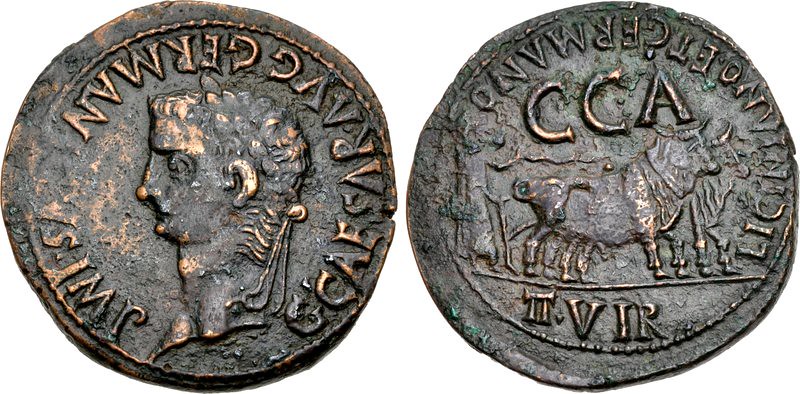
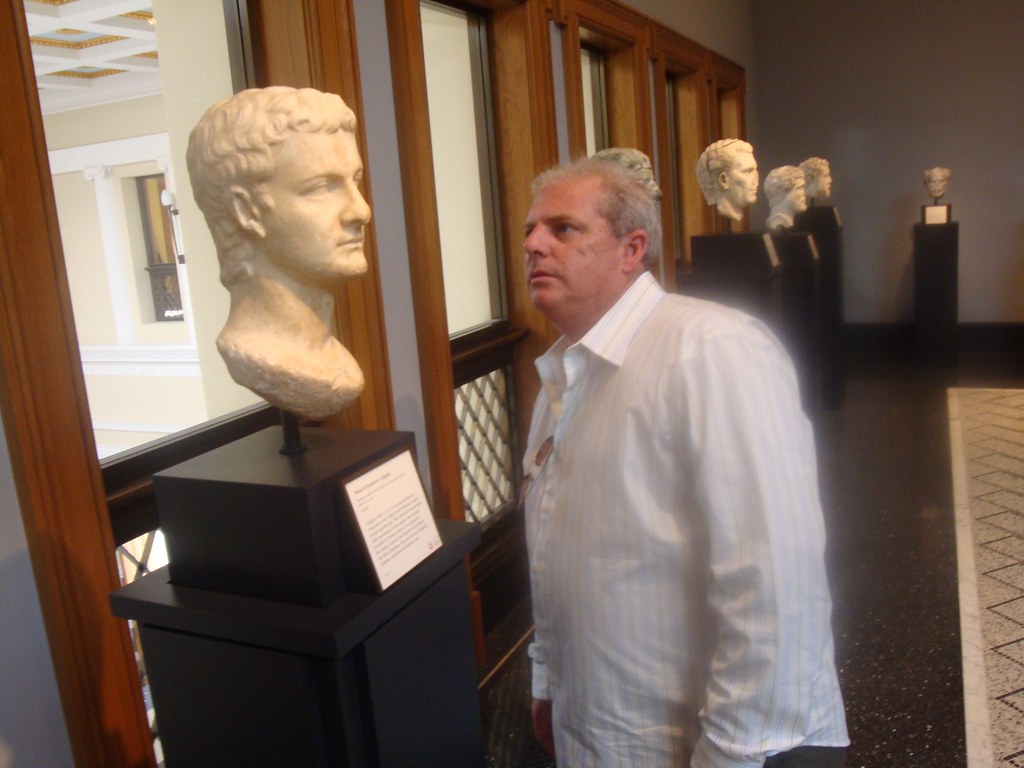

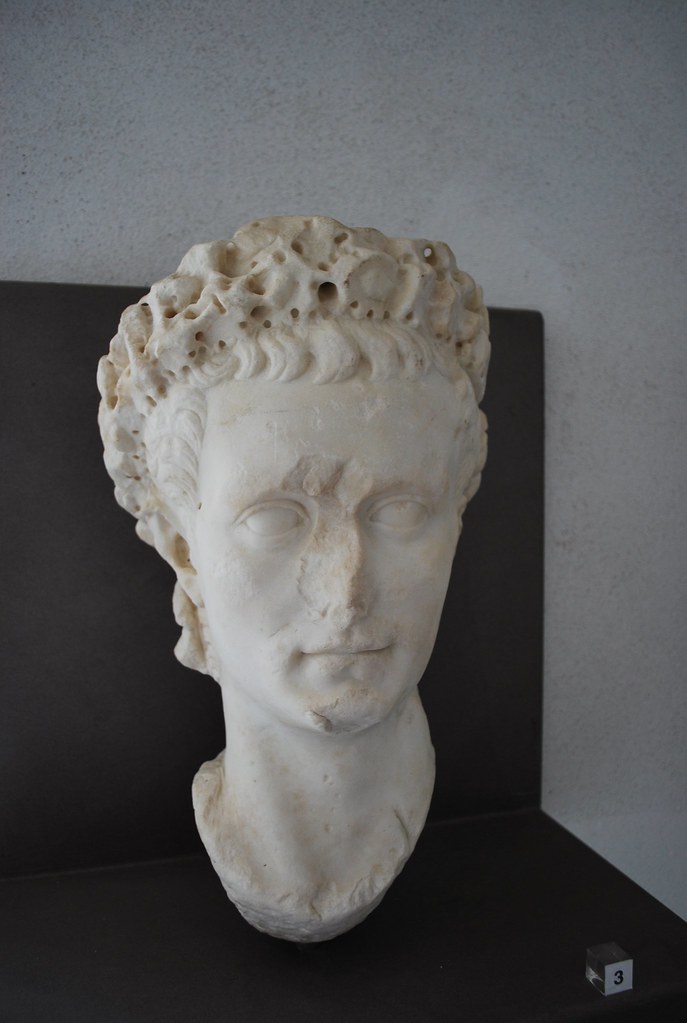

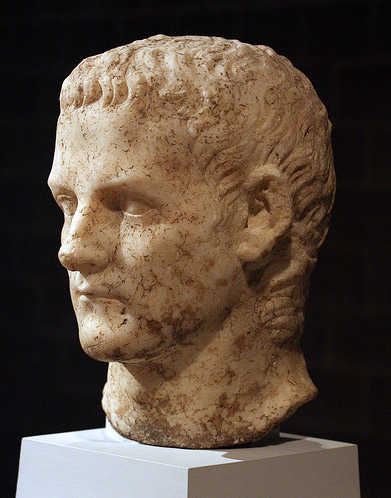
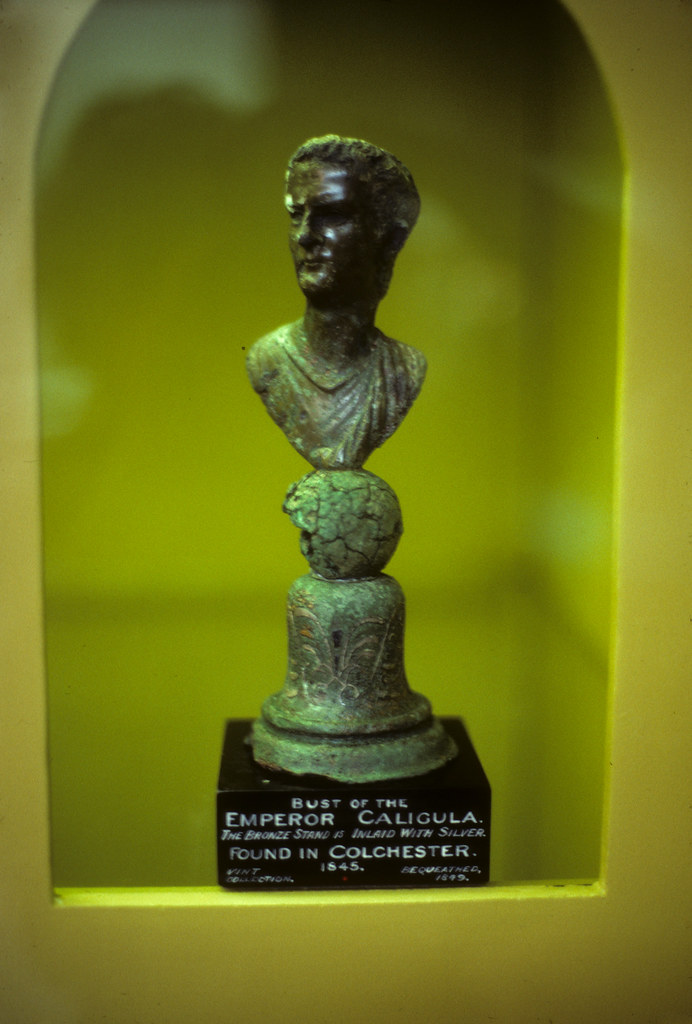
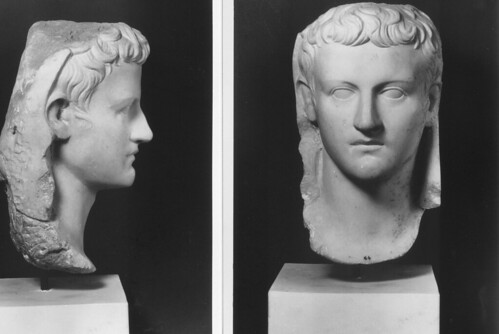
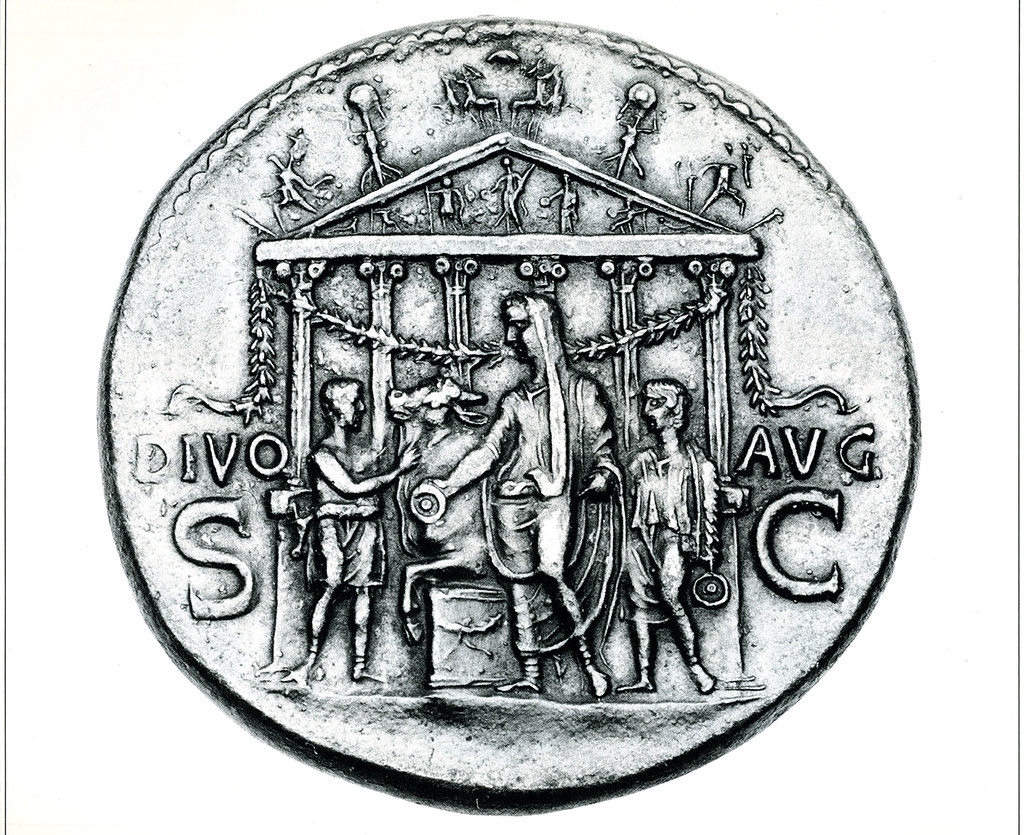
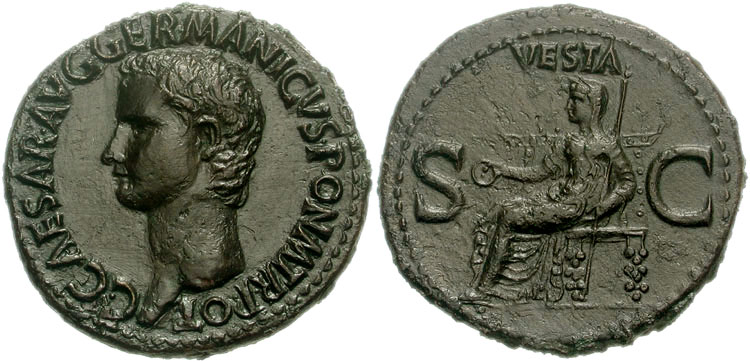


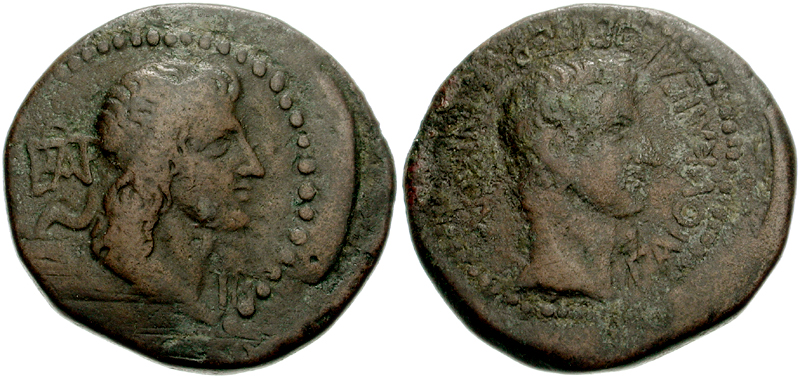
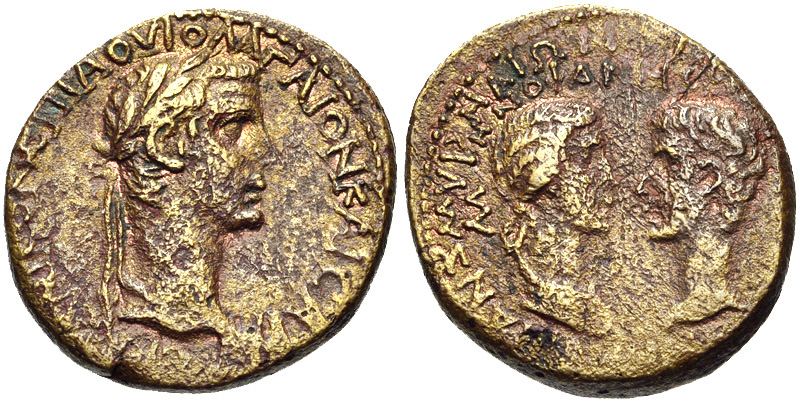
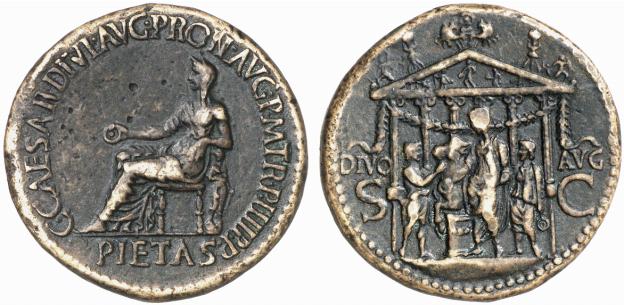



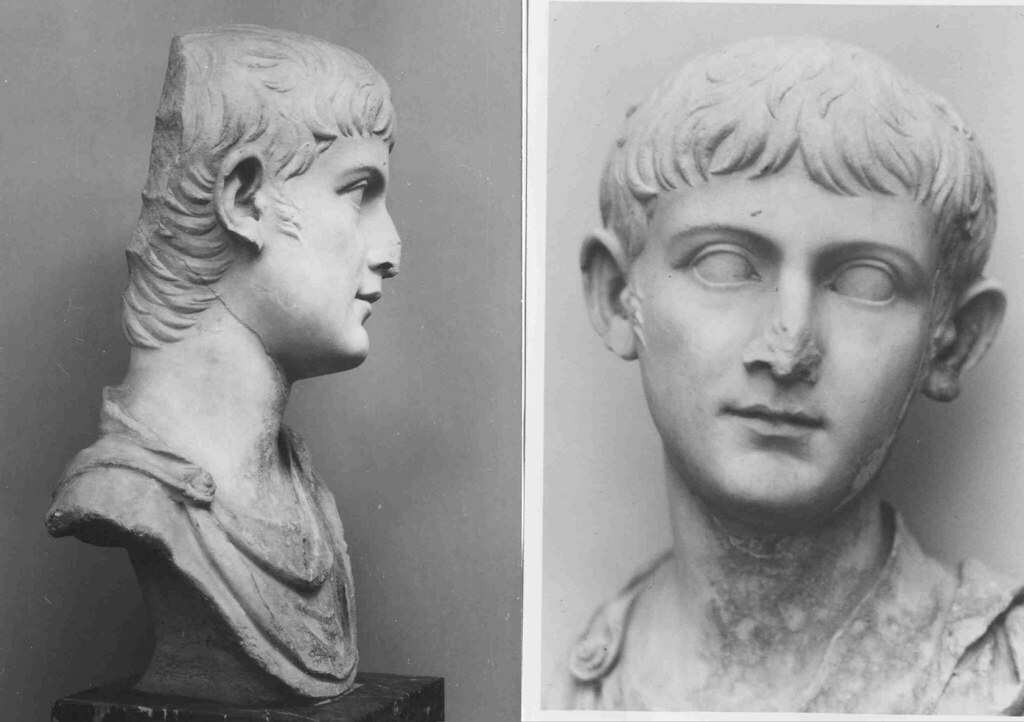

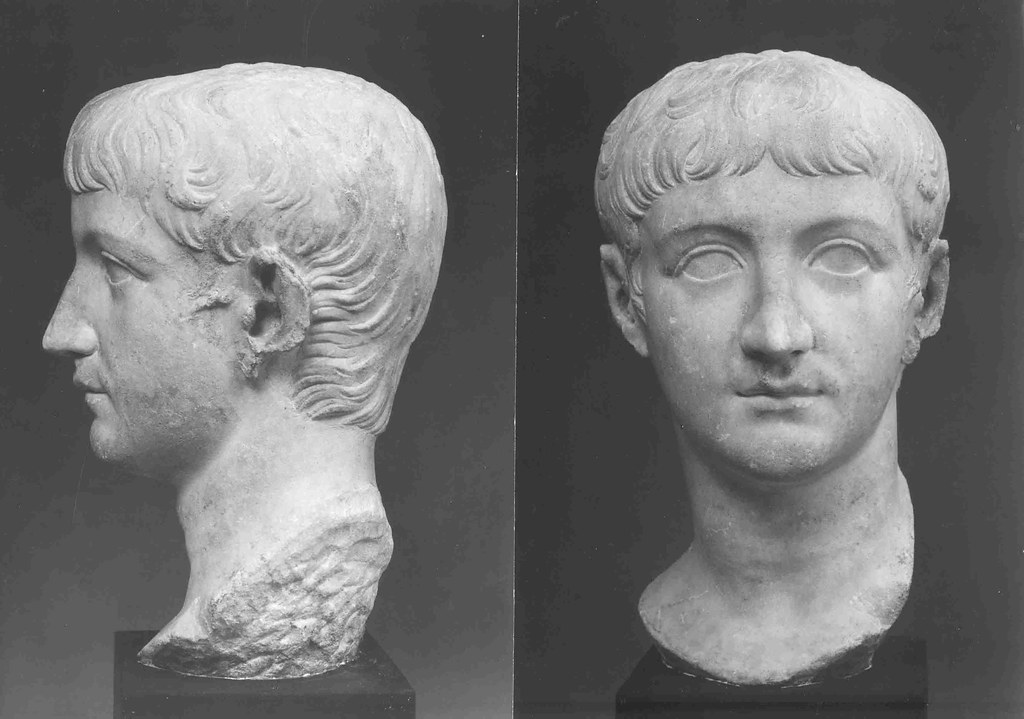



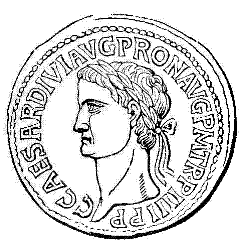














For more on this portrait see: D. Boschung 's, "Die Bildnisse des Caligula" (1989). Page 117 for description and plates 33 1 thru 4.